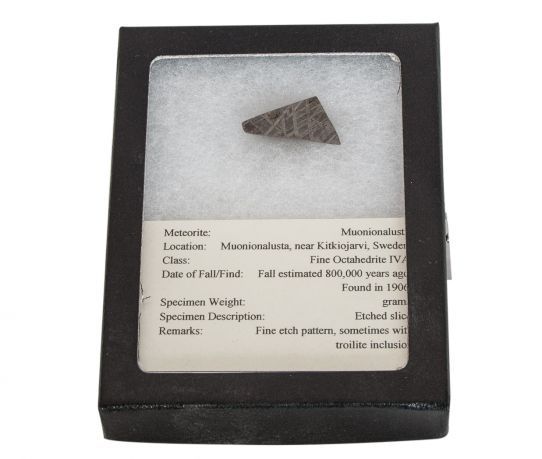We use cookies to make your experience better.
Meteorite "Mounionalustu" strike (1906), Kitkirjokavi, Sweden
The Muonionalusta is a meteorite classified as fine octahedrite, type IVA (Of) which impacted in northern Scandinavia, west of the border between Sweden and Finland, about one million years BCE. The first fragment of the Muonionalusta was found in 1906 near the village of Kitkiöjärvi. Around forty pieces are known today, some being quite large. Other fragments have been found in a 25-by-15-kilometre (15.5 mi × 9.3 mi) area in the Pajala district of Norrbotten County, approximately 140 kilometres (87 mi) north of the Arctic Circle. The meteorite was first described in 1910 by Professor A. G. Högbom, who named it "Muonionalusta", after a nearby place on the Muonio River. It was studied in 1948 by Professor Nils Göran David Malmqvisti The Muonionalusta, probably the oldest known meteorite (4.5653 billion years), marks the first occurrence of stishovite in an iron meteorite. The name Muonionalusta is difficult for some to pronounce: ['mu-o-ni-o-na-lu-sta] or /MOO-oh-ne-oh-nah-loo-stah/ from the Muonio River (muoni- apparently means ‘food’); -(o)n- could be a needed connective; the final element alusta means ‘base, foundation, a stand, mat, tray’, thus probably ‘Munio (River) base’.












